The notion of picking a 160mm bike as a suitable long-term test sled for riding on our home trails would’ve seemed fanciful up until the last couple of years. Travel in these meaty portions traditionally has brought with it too many compromises – floppy singletrack handling, ploddy climbing, sogginess like a tomato sandwich.
But lighter frames, 27.5” wheels, more balanced geometries and better suspension have all come together to deliver a delicious cocktail of all-round abilities that have made 160mm+ bikes a viable do-it-all machine. And the latest incarnations of the Norco Range exemplifies this.
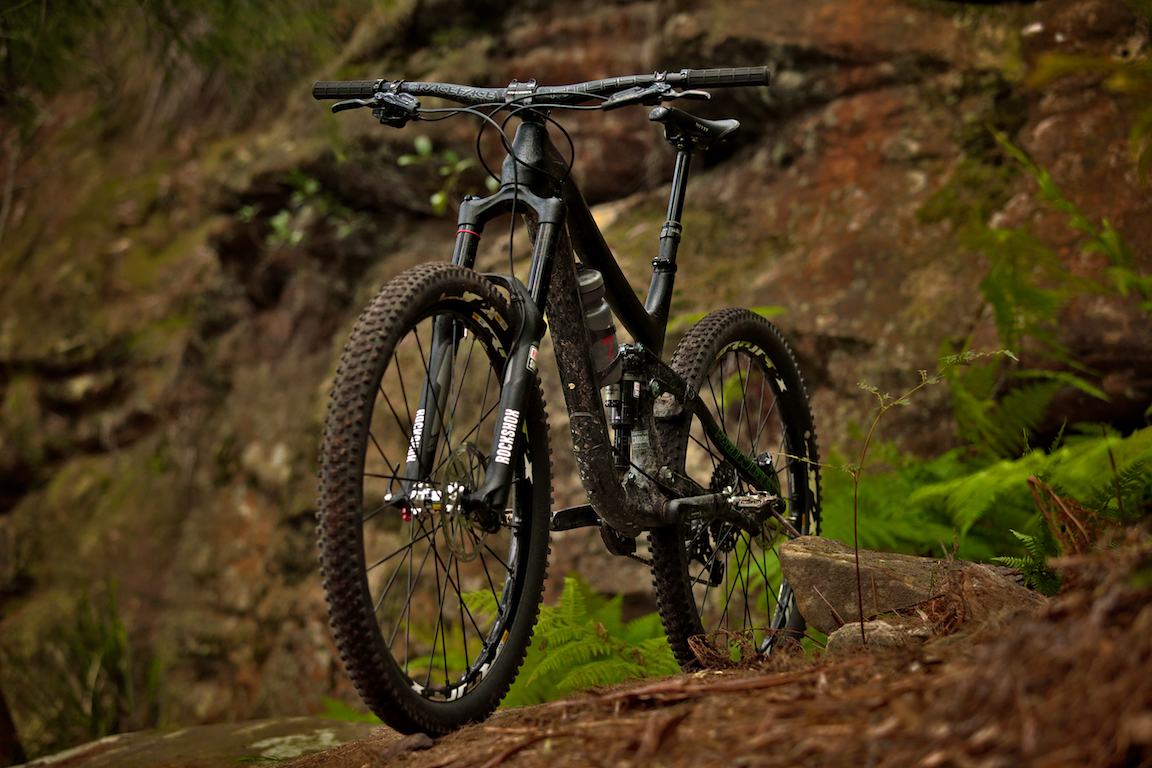
The Black Beauty caught our eye almost 12 months ago at the Australian Norco launch. Like a schoolboy too shy to ask for a dance, we didn’t give the Range c7.2 a whirl immediately, but admired it from afar. And so arrangements were made for an extended test ride. We’ve now had a little over eights months of fun on this beast. – here’s what we’ve learnt.
[divider] Build[/divider]
Norco have sky-rocketed in our esteem these past few years; they now produce some of the best looking, best featured carbon bikes on the market. Take a squiz at the Range; full carbon (excluding the chain stay), internally cabled, new-school single-ring-only construction, size-specific geometry, gorgeous gloss-on-matte graphics.
Finer details just emphasise the refinement; the flush Syntace rear axle won’t snag on rocks and roots, the internal cables don’t rub or rattle, and they’ve even managed to make room for both a piggy-back shock and a full-size water bottle.
On the point of the cables, we are a little circumspect about the need for an internal rear brake line. We damaged the line on the SRAM Guide RS rear brake early in the piece and the internal-only routing definitely makes this kind of repair work a little more arduous. But, it does look great. One improvement could be the addition of internal guide tubes too, to make threading the brake line and rear housing a simpler task.
The neglect test is a good way of establishing how well a bike has been assembled, and so we didn’t check the suspension pivots for the use of Loctite or even check the bolt tensions when assembling the Range. They came loose eventually, but it took a lot of riding. The main rocker pivot was the first to wiggle loose, followed by the dropout pivot. Since tightening them both back up, there haven’t been any repeat issues, so that’s a big tick in our books.
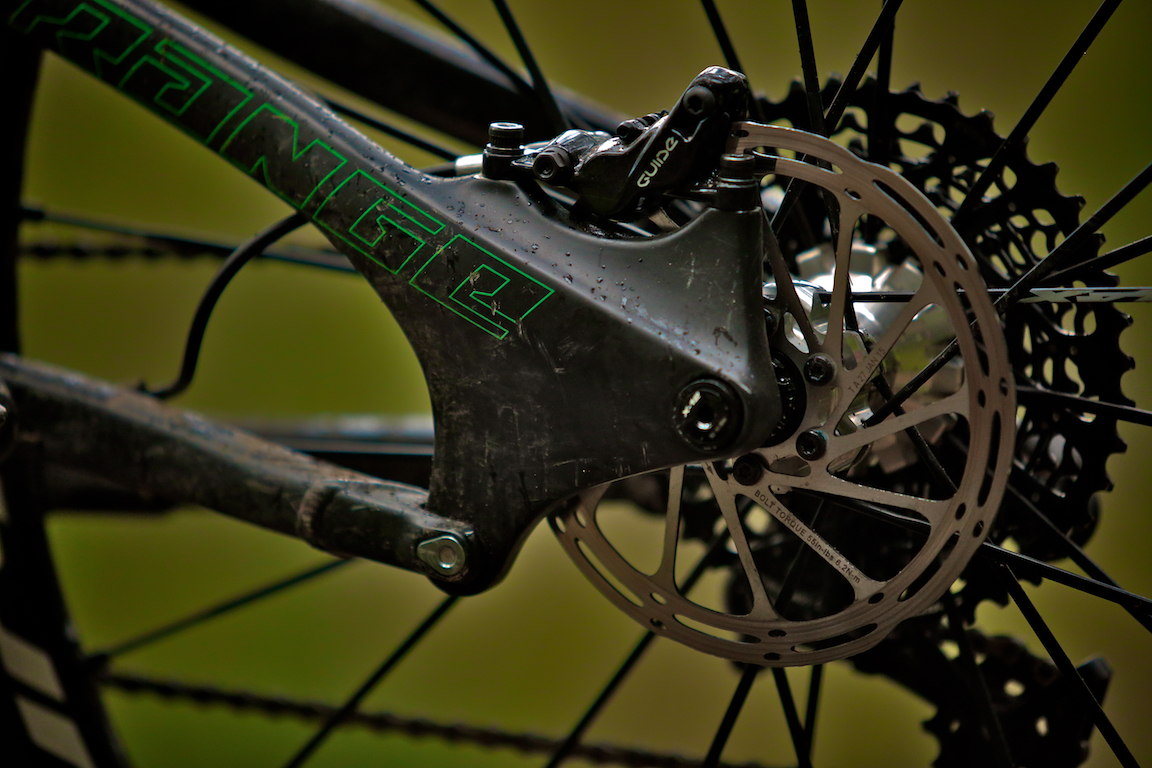
Norco have a unique take on bike sizing; the different sizes aren’t just longer in the seat tube / top tube, but the rear end correspondingly is longer or shorter too. In a size medium, the chain stays are just 428mm long. Ditching the front derailleur certainly helps free up some space, and there’s plenty of tyre clearance. During our testing we’ve run up to 2.4” rubber and clearance has never been a concern.
One point of note is that while the Range does come with a bash guard, your choice of chain guides is a little bit limited unless you fit a larger chain ring. The Range comes stock with a 30-tooth ring, which we really like, but you can’t run a D-mount style chain guide (no front derailleur tab) and there aren’t many ISCG-mounted guides that’ll accommodate a small ring like this. This is especially relevant to racers, and given that we’ve dropped the chain a handful of times, it something worth considering.
[divider]Spec[/divider]
The Range’s build kit is sensible, robust and very, very black. This is not the kind of bike you want to leave outside your tent at night – it’s invisible. During our testing, we did change a few components on the Range, including the wheels and fork. Both of these changes were in the name of product testing, though the wheels are one item we would consider upgrading on this bike.
SRAM’s super popular Pike and X1 drivetrain need no introduction, but the Guide RS brakes with 180mm rotors weren’t a known quantity when began riding this bike. It didn’t take us long to appreciate that they’re a much better brake than the Elixirs and a huge leap forward for SRAM on this front, which a snappy, positive lever feel and shit tonnes of power. We’ve had zero issues with these stoppers, other than some wet weather howling.

The fork and shock have likewise been great, though it must be said the Pike has been sharing the workload with a FOX 36, which we also tested on the Range. We didn’t feel the need to add any volume reducers to the Pike to get the spring rate right for our lightweight test rider (63kg) though some heavier riders might opt to run a spacer or two. As we’ve noted before, it’s an easy fork to get along with, with buttery performance from the get go.
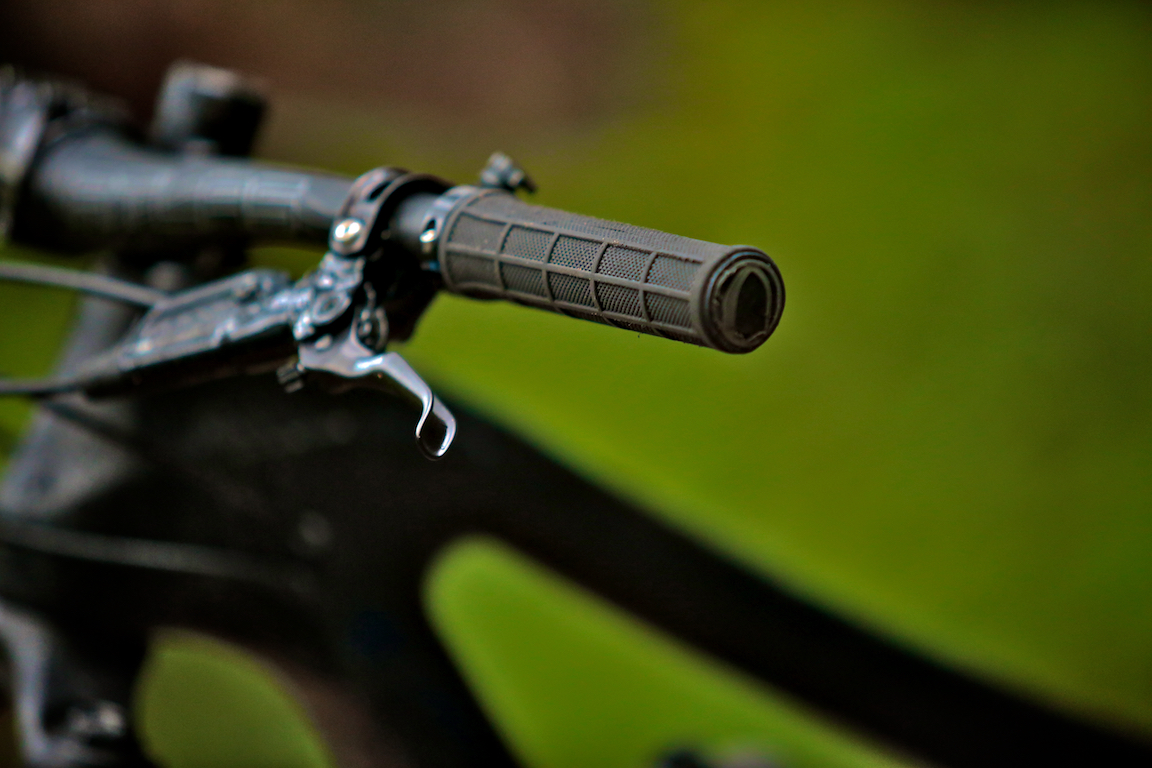
We experimented a little with the rear shock pressures, before settling on more sag, rather than less. With 30% sag, we were able to get full travel on the trails where we’d like to, and then we judiciously used the shock’s compression lever to tackle the climbs. Norco have got it right with the Range’s rear suspension feel too – it’s nicely and lively, and it always seems to be shooting you forward.
We didn’t run the Norco’s stock wheelset for very long. After busting a spoke on an early ride, we took the opportunity to pop on some other wheels we were reviewing. While the Range’s stock Sun/DT wheelset is solid, it does have a fair bit of heft to it, especially compared to some of the wider, carbon-rimmed wheels that are becoming more popular and cheaper by the minute. During our testing we’ve run SRAM Roam 60 wheels (too narrow by current standards, and which have since cracked) and more recently Mavic’s Crossmax SX wheels, which are fantastic. Dropping weight out of the wheels brought even more liveliness to the bike, and really improved the climbing performance too. We know wheels aren’t a cheap upgrade, but it’s really the only obvious avenue to extract any more meaningful performance out of this bike.

The reliability of the RockShox Reverb Stealth dropper post has been pleasing too. We’ve had some issues over the years with the Reverb’s reliability, but this particular one was put together right and hasn’t missed a beat. We also really like the way Norco have used Match Maker clamps on the brakes/shifter/dropper – it makes for a super clean handlebar.
[divider]Ride[/divider]
In the current #soenduro market, there has been a real push towards some pretty downhill geometries – bikes have been getting pretty darn slack and low in this 160mm segment. The Norco doesn’t dive into the trend quite as eagerly as some, and that’s real part of the appeal for us. It’s a long-travel bike that doesn’t feel like a pig if you’re riding it on less than long-travel trails.
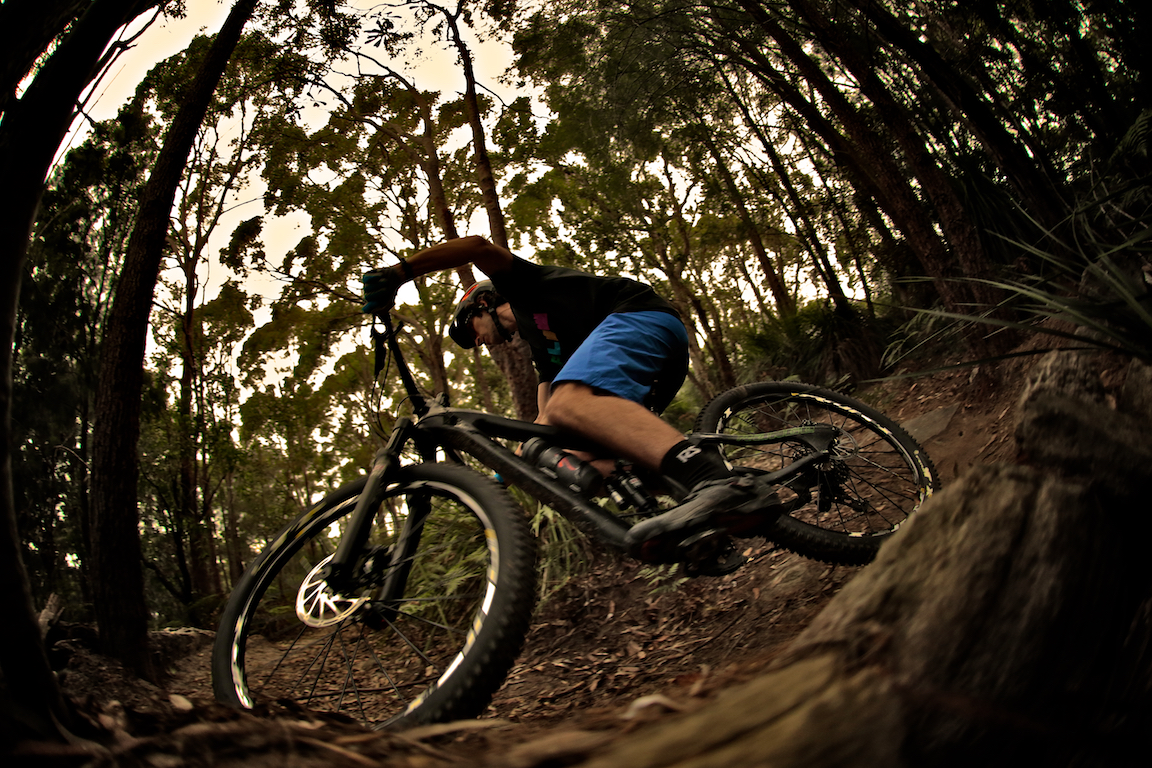
The Norco’s head angle is 66 degrees. Compare this to some of its direct competitors; YT Capra – 65.2; Specialized Enduro – 65.5; Trek Slash; 65.0; Giant Reign – 65.0 degrees. The difference isn’t huge on paper, but it is enough to be noticeable on the trail, keeping the front end on track when the trails are flatter or pointing up. The relatively slim and fast-rolling tyres that come on the Range (Maxxis High Rollers in a 2.35”) help too.
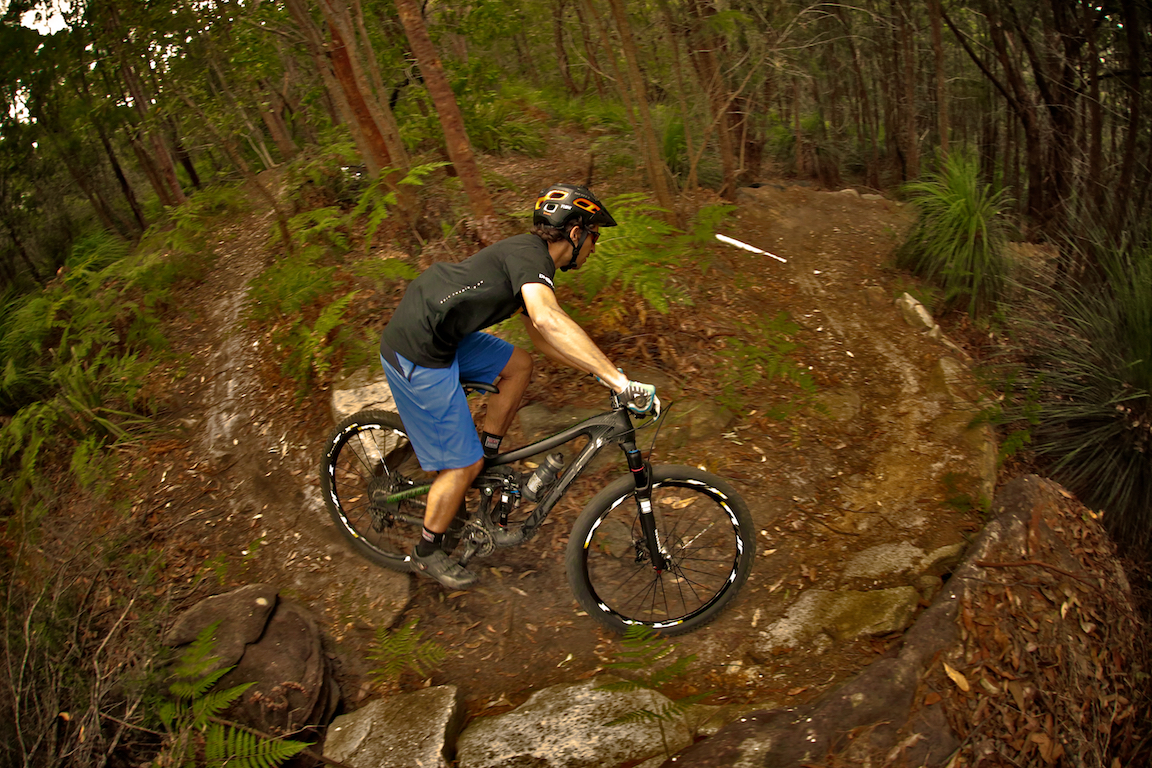
Norco have their own take on the four-bar FSR suspension configuration, using a longer Horst link than some other brands that run the same system (for instance, Specialized). This gives the Range a notably rearward axle path early in the travel, resulting in more chain growth, which is designed to make for more efficient pedalling. And it is efficient, especially if you’re spinning that little 30-tooth chain ring up a climb. The responsiveness of the Range to quick stabs at the pedals is a highlight too; with the short chain stays and sensible use of chain tension, you can easily pop up the front wheel. You do notice a bit of chain tug back through the pedals when sprinting, especially over rougher terrain, but the power definitely gets to the ground in a nice and direct fashion.

On the other side of the equation, those times when you’re pointing straight down the hill and pedalling is far from your mind, the Range is a balanced, precise and fast machine. Getting the front and rear suspension working in harmony is simple with the matched RockShox fork/shock, and we actually found the Norco’s overall balance was better when we had the Pike up front, rather than the FOX 36. We do think the FOX is better fork on the whole, but it didn’t mesh quite so nicely with the Monarch Plus shock.
For a bike with 160mm travel, the Range possesses a serious ability to change lines or take to the air. It doesn’t hug the ground quite like some other bikes in this segment, but rewards riders who like to find ways over, rather than through, the nastiest bits of trail. That said, when you do need to muscle the Range, it’s not lacking; there’s a ton of steering precision and confidence with the massive 35mm diameter Raceface bar and stem.
[divider] Other options[/divider]
With the rise in popularity of Enduro racing, plus the huge improvements in weight and efficiency we discussed earlier, the Australian market is now full of great 160mm-travel bike options that weren’t available in previous years. In the last few months alone, we’ve tested a whole swathe of them.
There’s the unique Breezer Repack Team, which is really more of a long-travel trail bike than a radical all-mountain bike. Trek’s Slash 9.8 is a superb offering, and offers very similar value to the Norco Range. We especially like the wheels on the Slash, plus the fact that Trek opted not to use their DRCV shock. Giant’s Reign 1 will appeal to those who like an alloy bike, rather than carbon. This mango coloured beast is pretty much a mini downhill bike in terms of the way it rides. The Specialized Enduro is a superb platform, and even though we were underwhelmed by the rear shock on the S-Works model we reviewed, we rate the Enduro from the big S very highly. Finally, we’re in the midst of reviewing the YT Capra, which seems to be extremely good value and a potential firestarter in the market.
[divider]Conclusion[/divider]
The Range has been a brilliant addition to the Flow stables over the past eight months. Swapping out the wheels for lighter, more responsive hoops is a nice way to compliment the Range’s abilities as an all-rounder, and would be the only upgrade that we could recommend.

We do have plenty of rough riding on our local loops, but we were nonetheless a bit concerned that the Range was going to be overkill for most situations, and we worried that perhaps the shorter travel Sight would have been a better choice. This wasn’t the case, and we’ve found ourselves reaching for this bike far more often than anticipated. The Range may be big on travel, but its efficient riding position and suspension, and sensible geometry mean it refuses to be pigeon holed.